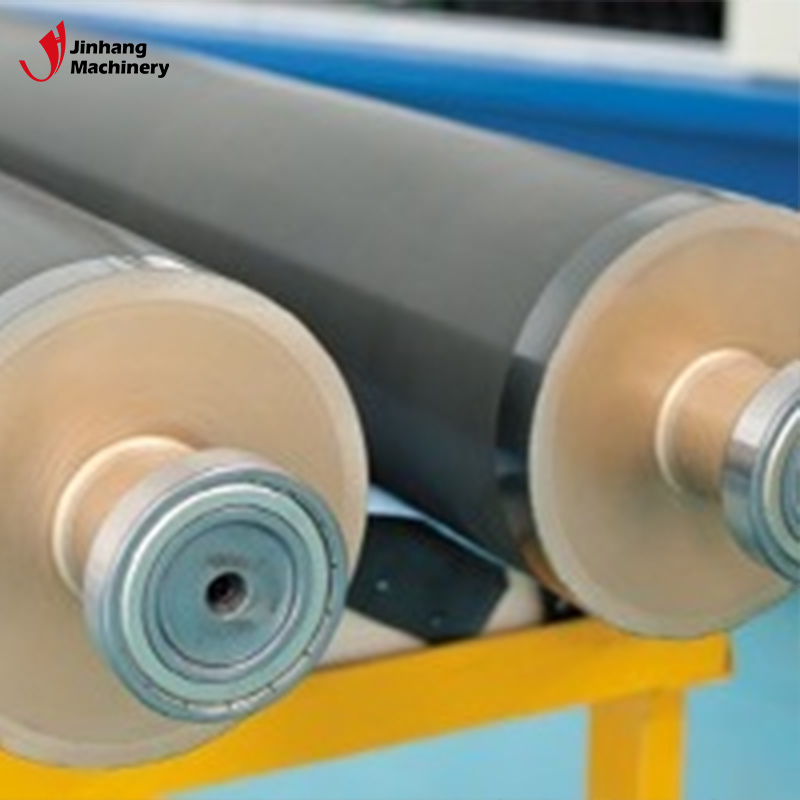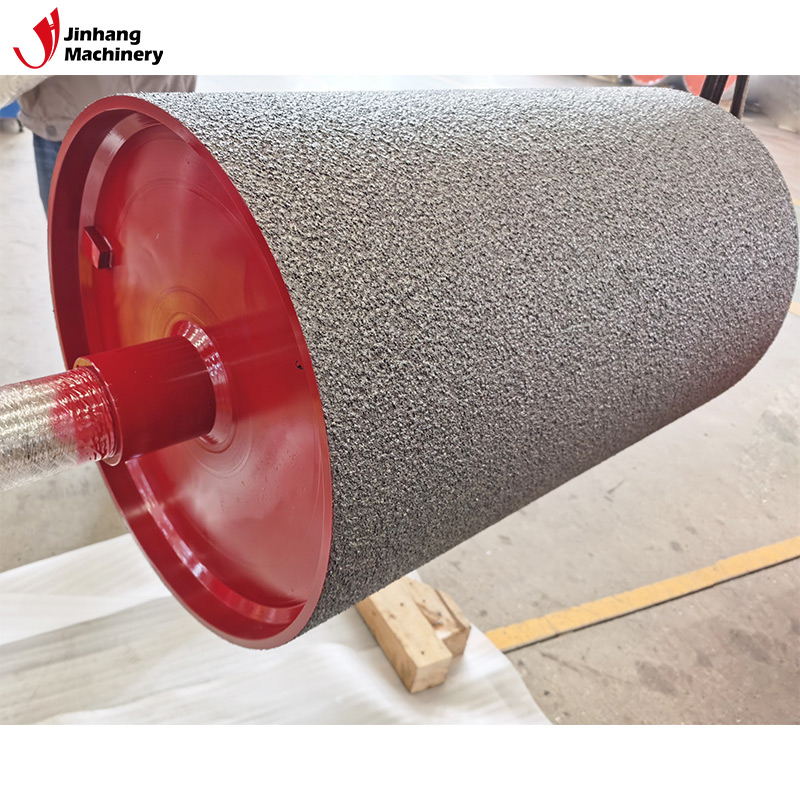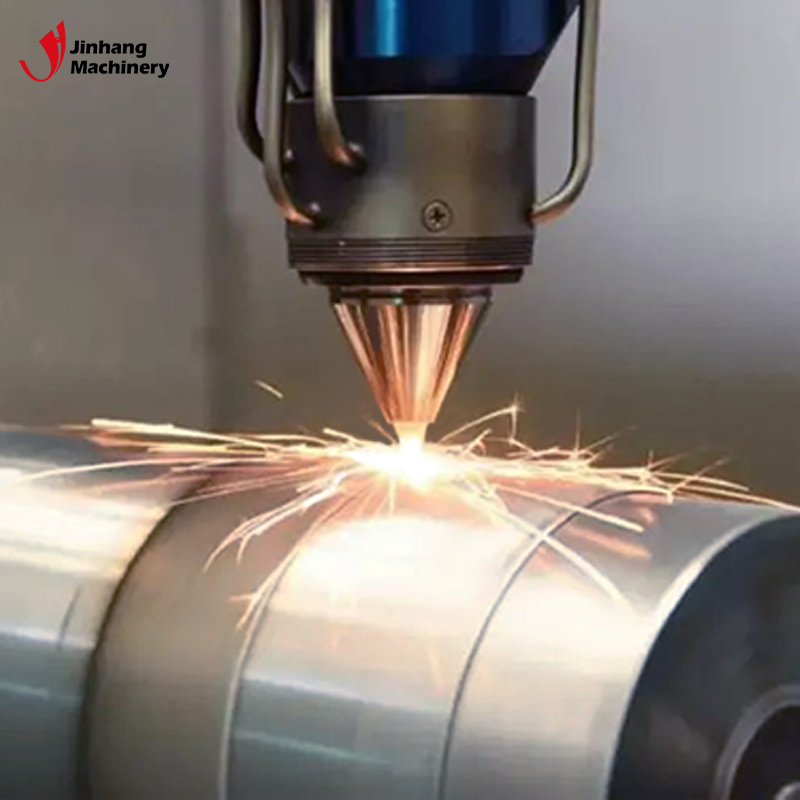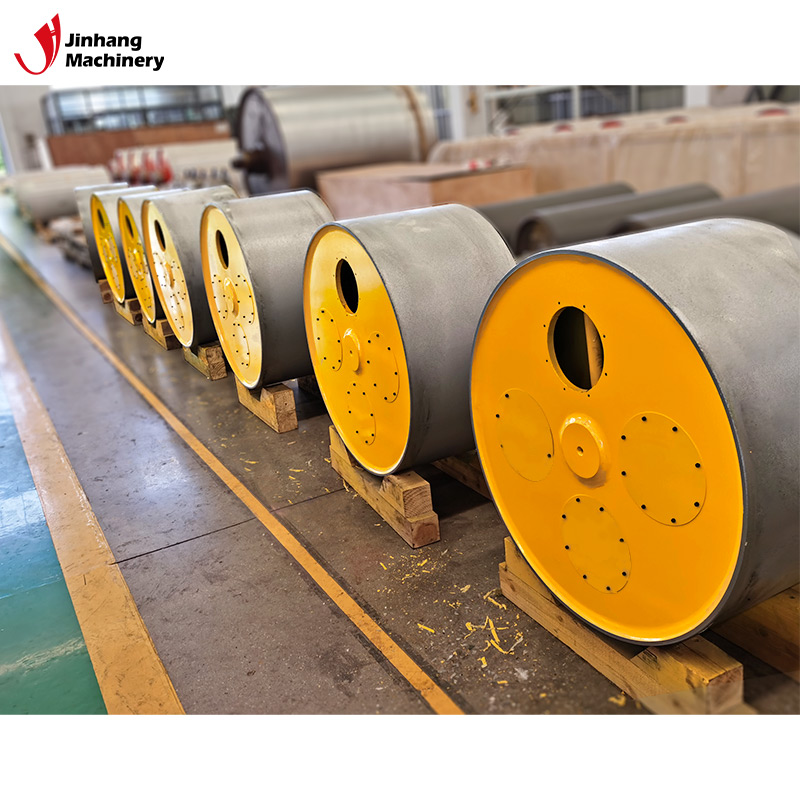What is the coating material of ceramic anilox roller?
Ceramic anilox rollers are widely used in coating, printing, papermaking, metal processing, plastic processing and other fields. Their high precision and surface quality are crucial to the production effect of the product. As a key component, the coating material of the ceramic anilox roller not only determines the wear resistance, corrosion resistance and thermal stability of the roller, but also directly affects the quality control, process efficiency and cost in the production process. For the coating materials of ceramic anilox rollers, understanding their types, characteristics, scope of application and basis for selection will help enterprises make more scientific and reasonable decisions in production.
In this news, we will explore the coating materials of ceramic anilox rollers in depth, analyze their main types, application characteristics and key factors to be considered when selecting coating materials, and provide scientific reference for enterprises.

What is a ceramic anilox roller?
Ceramic anilox roller refers to an anilox roller with a ceramic coating on its surface. Its core function is to control the liquid distribution in production processes such as coating, printing and coating through the mesh texture on its surface. Anilox rollers play a vital role in many industries, especially in coating, paper production, packaging and printing, and metal processing. Ceramic coatings enable these anilox rollers to maintain a long service life and excellent performance under high loads, high speeds and harsh working conditions.
Compared with metal rollers, the main advantages of ceramic anilox rollers are their high hardness, wear resistance, corrosion resistance and excellent thermal stability. These advantages make ceramic anilox rollers particularly suitable for high-precision production processes and can provide higher stability and consistency for production.

What are the types of ceramic anilox roller coating materials?
There are various types of coating materials for ceramic anilox rollers. Common coating materials include bauxite ceramics, aluminum oxide (Al2O3), silicon nitride (Si3N4) and composite ceramic coatings. Each coating material has different properties and characteristics and is suitable for different industrial needs. The following are several common ceramic coating materials:
1. Alumina (Al2O3)
Alumina is one of the most commonly used coating materials for ceramic anilox rollers. Alumina has excellent wear resistance, corrosion resistance and high temperature stability, and is widely used in various demanding industrial fields. Its surface hardness is close to that of diamond, so it can effectively cope with high-pressure and high-speed working environments.
Advantages of aluminum oxide:
● Strong wear resistance: The aluminum oxide coating has high hardness and good wear resistance, which can effectively reduce roller surface wear and extend service life.
● Corrosion resistance: Aluminum oxide has good acid, alkali and chemical corrosion resistance, and can maintain stable performance in many harsh environments.
● High temperature stability: Aluminum oxide can maintain stable physical and chemical properties under high temperature conditions and is suitable for high-temperature processing.
Disadvantages of aluminum oxide:
● Brittleness: Aluminum oxide is highly brittle and may break under impact or extreme operating conditions.
● Applicable scenarios: Aluminum oxide coating is mainly suitable for applications in high wear, high temperature and corrosive environments, such as coating, printing, metal processing, etc.
2. Silicon nitride (Si3N4)
Silicon nitride is a ceramic material with high hardness, good thermal stability and corrosion resistance. In ceramic anilox rollers, silicon nitride coatings are widely used in occasions with extremely high requirements for hardness and wear resistance.
Advantages of Silicon Nitride:
● Extremely high hardness: Silicon nitride has a hardness close to that of diamond, so it has extremely strong wear resistance.
● High temperature resistance: Silicon nitride can still maintain high strength in high temperature environments and is suitable for high temperature production processes.
● Strong corrosion resistance: Silicon nitride coatings have good tolerance to a variety of acidic and alkaline chemicals.
Disadvantages of Silicon Nitride:
● Difficulty in processing: Silicon nitride is difficult to process, the cost is relatively high, and it is easy to crack during the manufacturing process.
● Applicable scenarios: Silicon nitride coatings are widely used in industrial fields that require particularly high hardness and wear resistance, such as high-precision coating, metal processing, high-temperature resistant mechanical processing, etc.
3. Bauxite ceramics
Bauxite ceramics are a highly porous ceramic material, usually used in situations that require high wear resistance but do not require extreme high temperature stability. It has a certain degree of elasticity and is suitable for high-speed and high-load operating environments.
Advantages of bauxite ceramics:
● Excellent wear resistance: Bauxite ceramics have strong wear resistance and can increase the service life of the roller.
● Relatively low cost: Compared with silicon nitride, bauxite ceramics have a lower cost and are suitable for some applications with medium loads and wear environments.
● Good thermal stability: Able to work stably at relatively high temperatures.
Disadvantages of bauxite ceramics:
● Brittleness: Similar to other ceramic materials, bauxite ceramics are brittle and need to be handled with care.
● Applicable scenarios: Mainly used in medium-load, high-speed coating or printing processes, especially in industries such as paper production and packaging printing.
4. Composite ceramic coating
Composite ceramic coating is a mixture of multiple ceramic materials, usually a combination of alumina and other high-temperature resistant and corrosion-resistant materials. Composite coatings can combine the advantages of different ceramic materials to provide more comprehensive performance.
Advantages of composite ceramic coatings:
● Customized performance: Composite ceramics can customize the hardness, corrosion resistance and thermal stability of the coating as needed to meet special process requirements.
● Improve overall performance: By selecting a combination of different materials, it is possible to improve multiple aspects of performance, such as wear resistance, impact resistance and thermal stability.
Disadvantages of composite ceramic coatings:
● High cost: The manufacturing cost of composite ceramics is relatively high, and they are usually suitable for very demanding industrial applications.
● Applicable scenarios: Composite ceramic coatings are usually used in some high-precision, high-demand applications, especially in high-load, high-speed production processes that require multiple performances at the same time.

What are the considerations for selecting ceramic anilox roller coating materials?
To select the appropriate ceramic anilox roller coating material, it is necessary to consider a number of factors, including process requirements, production environment, cost budget and expected service life. The following are several important considerations:
1. Wear resistance
Wear resistance is the primary consideration in the selection of ceramic anilox roller coating materials. For high-frequency, heavy-load working environments, choosing coating materials with extremely high hardness and wear resistance, such as silicon nitride or aluminum oxide, can effectively extend the service life of the equipment and reduce downtime caused by wear.
2. Thermal stability
Thermal stability is another key factor that cannot be ignored when selecting coating materials. In many industrial applications, rollers need to withstand high operating temperatures. If the process involves a high temperature environment, it is necessary to select ceramic coating materials with good high temperature stability, such as aluminum oxide and silicon nitride.
3. Corrosion resistance
When working in many chemical environments, the corrosion resistance of the coating material is crucial. Ceramic coatings such as aluminum oxide and silicon nitride have excellent chemical corrosion resistance and can resist the erosion of corrosive substances such as acids and alkalis, ensuring that the rollers can still work stably in harsh environments.
4. Cost factors
The costs of different ceramic materials vary greatly. When choosing coating materials, companies need to make choices based on their production needs and budgets. If the needs are more conventional, bauxite ceramics may be the most cost-effective choice, while for processes with high precision requirements, composite ceramic coatings may be more suitable.
5. Processing and maintenance requirements
Some ceramic coating materials are difficult to process and may require special processing techniques and equipment, so the convenience of processing and maintenance should be considered when choosing. Silicon nitride and composite ceramic coatings are often more complicated and expensive to process and maintain than other coating materials.

Leading Supplier of Custom Rolls for Industrial Machines – Great Prices, Fast Delivery
JH Machinery is your trusted partner for high-quality, custom-made rolls for industrial applications. We specialize in producing rubber, polyurethane, electroplated, and tungsten carbide-coated rolls, all made to your exact specifications. Whether you're looking for low-cost options or need a highly customized solution, our factory in China can meet your needs with competitive pricing and bulk purchasing options. Take advantage of our wholesale rates, special promotions, and quick delivery times by contacting us for quotes today.
